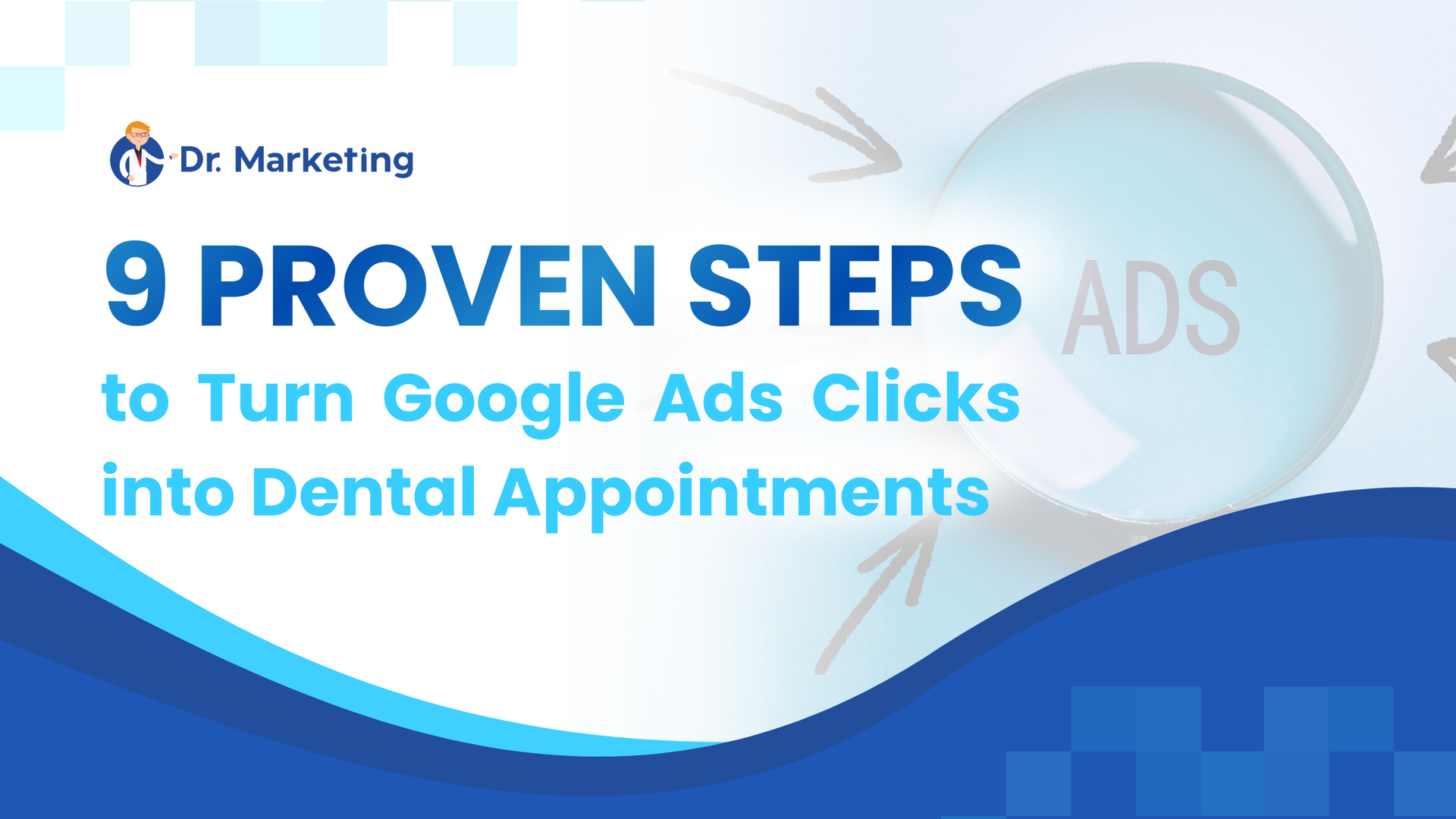Dental Marketing Budget: How Much to Spend and What Works Best

Source: Dr. Marketing
In today’s world, marketing is no longer something dental practices can afford to overlook. Patients are no longer choosing dentists based solely on proximity. They’re reading reviews, visiting websites, following local professionals on social media, and comparing their experiences before they ever make contact.
That’s why a well-thought-out marketing strategy is not just an add-on — it’s the engine that drives patient acquisition, retention, and long-term growth. Whether you’re starting from scratch or looking to scale your current practice, knowing how much to invest — and where — is critical.
The 5% to 10% Guideline: A Starting Point

Most dental practices should plan to allocate between 5% to 10% of their annual gross revenue toward marketing. This is not an arbitrary range. It reflects the level of investment typically needed to stay competitive and visible in your local market.
If you’re launching a new practice or entering a competitive urban area, leaning closer to 10% is often necessary to gain traction quickly. For well-established practices in smaller communities or with high patient loyalty, closer to 5% may suffice.
For example:
- A practice generating $750,000 annually should plan a marketing investment between $37,500 and $75,000 per year.
- That breaks down to roughly $3,100 to $6,200 per month depending on the services used and goals set.
Five Core Areas Every Dental Marketing Plan Should Include

Rather than treating marketing as a list of disconnected services, it helps to group them into broader categories. These categories align with how patients discover, engage with, and remain loyal to your practice.
Website and Digital Presence
First impressions happen online — and often within seconds. A polished, user-friendly website that reflects your brand and services is essential. It should be mobile-responsive, easy to navigate, and designed to convert visitors into patients. But website design is not a one-and-done project. Ongoing maintenance, software updates, content revisions, and security monitoring are vital to keeping the experience fast, safe, and accurate. Practices typically devote around 15% to 25% of their marketing budget here, especially in their first year or after a rebrand.
Even for modest offices, that often means an initial investment of a few thousand dollars followed by regular support fees. For multi-location practices, additional location-specific landing pages or microsites may be needed.
Search Engine Optimization (SEO)
You could have the best website in town, but if it doesn’t appear in search results when someone types "dentist near me", it’s nearly invisible. SEO ensures that your site ranks well for relevant local searches. That includes keyword optimization, regular content updates, local listings, backlinks, and technical improvements to your website.
Dentists should expect to dedicate 20% to 30% of their marketing budget to SEO, especially in their first 12–24 months of growth. If you’re located in a highly competitive city or offer niche services, consistent SEO work becomes even more essential.

Paid Advertising (PPC and Social Ads)
While SEO builds momentum over time, paid ads offer immediate visibility. With platforms like Google Ads, Facebook, and Instagram, you can show your practice to patients actively searching or browsing in your area.
Ad spend is typically split into two components:
- The platform budget (what you pay Google, Meta, etc.)
- The management fee (what you pay a marketing provider to manage your campaign)
Depending on goals, most practices allocate 25% to 40% of their marketing budget to paid advertising — especially when seeking quick new-patient growth. Monthly costs can vary, but even a few hundred dollars a month can create meaningful returns if campaigns are properly targeted and optimized.
Content Marketing and Social Engagement
Patients today want more than just a provider — they want a guide. Creating content like blogs, short videos, and social media posts can help educate, build trust, and keep your practice top-of-mind. Content marketing also plays a supporting role in SEO. Google favors fresh, relevant content — so regularly publishing articles on topics like oral hygiene tips, treatment options, or even patient FAQs adds long-term value.
Most practices dedicate 10% to 20% of their budget to content creation. That includes blogging, video production, social posting, and occasional email newsletters. Even two well-written blogs a month can make a noticeable difference in traffic and authority.
Reputation Management, Chat Tools, and Retention Systems
Today’s patients read reviews before they book. Reputation management tools help you proactively collect feedback, respond to concerns, and build social proof. They also help surface satisfied patients who are likely to recommend you publicly. Other tools — such as website chat widgets, chatbots, automated appointment reminders, or drip email campaigns — help keep your communication consistent and patient-friendly. These tools may not seem as flashy as ads, but they often make the difference between a curious visitor and a booked patient.
Combined, these systems typically take up 5% to 10% of the marketing budget. Despite the smaller allocation, their long-term return in terms of retention and conversion can be significant.
Common Mistakes Dentists Make When Budgeting for Marketing

Too often, dental offices make reactive marketing decisions. A slow month triggers a rushed Facebook post. A competitor starts running ads, so a quick Google campaign is launched with little planning.
Here are some common pitfalls to avoid:
- Underinvesting early on: Many new offices hold off on spending until they “have more patients,” not realizing that marketing is how those patients are acquired. Waiting too long to invest can slow down visibility and hinder early growth. Instead of holding back, practices should build marketing into their startup budget from day one, ensuring they reach their community before competitors do.
- Ignoring website upkeep: A slow or outdated site deters patients, no matter how well your ads perform. If a potential patient clicks an ad and lands on a website that looks unprofessional or takes too long to load, they’re likely to leave without taking action. Your website is your digital front door — it should be fast, easy to navigate, and consistently updated with accurate information and compelling visuals.
- Spending too much on one channel: Over-reliance on paid ads without building SEO or reviews can become costly long-term. While ads may deliver quick wins, they don’t build lasting visibility. If your entire strategy depends on one platform or one type of campaign, any shift in performance or cost can dramatically impact results. Diversifying your marketing efforts ensures stability and better long-term return.
- Stopping marketing once you’re busy: Marketing should not stop when schedules fill up. Consistency helps avoid downturns and prepares your practice for expansion. When practices pause campaigns during busy periods, they often face sudden dry spells later. A steady marketing presence keeps your pipeline full, maintains momentum, and ensures your brand stays top-of-mind, even when your chairs are booked.
Avoiding these mistakes starts with building a sustainable, balanced strategy — not a reactionary one.
Consistency Over Volume: Why It Matters

A strong dental marketing plan is not about doing everything all at once. It’s about doing the right things, consistently. Patients who see your practice in multiple places — Google results, local directories, social media, even email — begin to develop familiarity and trust. This consistency reinforces your brand, even before the first visit.
Trying to do too much at once (like launching every possible campaign) often leads to burnout or underperformance. Instead, build a calendar, stick to a steady publishing schedule, and allow each strategy time to mature.
Measuring Results and Making Adjustments
It’s one thing to spend money on marketing — it’s another to know what’s working. Tracking results is essential. Key performance indicators (KPIs) can include:
- Website traffic and bounce rates
- Number of new patient inquiries per month
- Call volume or form submissions from ads
- Keyword rankings in your local area
- Review growth and average star rating
Marketing is not static. Budget allocation can — and should — shift over time. If your website and SEO are performing well, you might divert more funds to video content or patient retention. If visibility drops, you may need to refocus on ads or local optimization. Work with your marketing provider to review performance quarterly, identify trends, and adapt your strategy accordingly.
When to Spend More (and When to Pull Back)

There are times when increasing your marketing budget makes strategic sense:
- Launching a new practice or location
- Introducing new high-value services
- Expanding into new target markets
- Recovering from a plateau or seasonal slowdown
However, it’s also reasonable to adjust or reduce your investment when:
- You’ve reached capacity and are focused on retention — While it’s important to keep some baseline marketing active, you may temporarily shift more focus toward patient experience and internal systems.
- External events (like construction) are temporarily impacting new visits — If foot traffic or bookings are affected by factors outside your control, it may make sense to pause heavy ad spend and focus on lower-cost strategies.
- You need to reallocate funds toward internal improvements or hiring — Marketing doesn’t need to stop, but your budget can be redistributed for short-term operational needs while maintaining brand visibility.
The key is to remain intentional. Pulling back should mean refining or rebalancing — not disappearing. Marketing should never be driven solely by panic or momentum. It must always align with practice goals, patient demand, and long-term growth.
Treat Marketing as an Investment, Not a Cost

The most successful dental practices treat marketing as a growth engine — not an expense. By consistently investing in the right areas — your website, SEO, content, reputation, and advertising — you not only attract more patients, but also build lasting trust in your brand.
Even a modest, well-managed marketing budget can make a measurable impact over time. The key is to start with a plan, stick with it consistently, and adjust based on data. Whether you are launching your first practice or trying to stay visible in a saturated market, marketing is how you show up for your community — before they ever step foot through your door.
Lets us help you grow your practice!



